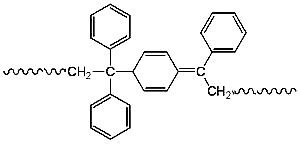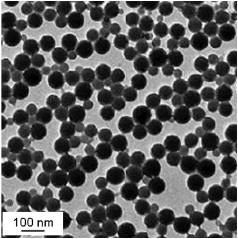DPE dispersions
The water-based Controlled Radical Polymerization (CRP) has been one of the fastest growing fields of interest in polymer research for the past decades. "Nitroxide mediated polymerization" (NMP), "atomic transfer radical polymerization" (ATRP) and "reversible addition fragmentation chain transfer" (RAFT) are the most common methods used today. Besides these, a method was developed using 1,1-Diphenylethylene (DPE).
The synthesis of emulgator-, metall-, additive- and solvent free waterborne dispersions is possible with the DPE-method.
The mechanism
With the DPE-method, block copolymers are synthesized in a two step process. In the first step an oligomeric, hydrophilic precursor is synthesized from hydrophilic monomers (like acrylates, methacrylates and methylmethacrylates), 1,1-Diphenylethylene and an peroxodisulfate initiator.
This precursor is the stabilizing agent for the second step of synthesis, in which non polar monomers (like (meth)acrylates, styrene) are added to the hydrophilic segment in an addition-fragmentation-mechanism. The forming amphiphilic block copolymers directly aggregate to micells with a diameter of roughly 10 nm that will further grow to about 50 to 150 nm when adding additional monomer.
Non-conventional core-shell-structured block copolymers are accessible through this method.
These copolymers are showing application-technological interesting properties:
- The film formation occurs considerably beneath the glass transition temperature, so DPE block copolymers can be used for solvent free coating or adhesive systems.
- The functionalized dispersion particles can be locally deposited onto galvanized substrates to realize a better corrosion protection.
- Through their micellular structure the nucleation and the growth of calcium carbonate and barium sulfate nanoparticles can be controlled. Different particle morphologies and mineral hollow spheres can be produced.



